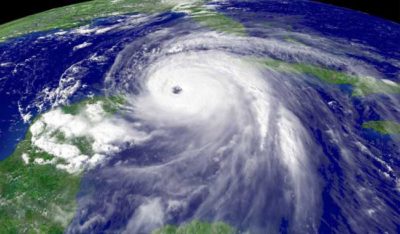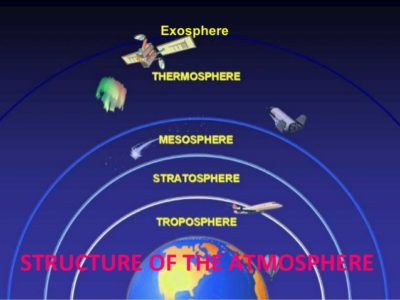
Meteorology as a science studying all physical phenomena in the air layer around the earth, or in the atmosphere.
Climatology is engaged in research of climate conditions.
Climatology is defined as the physics of the atmosphere: It was a descriptive science that has the task to provide a realistic picture of all atmospheric phenomena in the living world.
It is divided into:
– The general
– Special
LIMITS OF THE ATMOSPHERE
The lower limit of the atmosphere is clearly defined and is located between the mainland and the layer of air above the surface of the earth.
However, the upper limit of the atmosphere is not completely clear, it is fluid and can be placed in different places far from the surface area depending on the position where we want to find out.
The composition of the atmosphere
The atmosphere is a mechanical gas mixtures:
– Nitrogen 78.1%
– Oxygen 20.9%
– Argon 1%
– Corbon dioxide 0.03%
VERTICAL STRUCTURE OF THE ATMOSPHERE

The atmosphere is divided into 5 main sections:
– Troposphere (Tropopause) 0-11 km
– Stratosphere (Stratopause) 11-40 km
– Mesosphere (Mesopause) 40-80 km
– Thermosphere (Termopause) 80-800 km
– Exosphere over 800 km
TROPOSPHERE 0-11 km
-The Lowest and densest layer of the atmosphere
-About 80% of the atmosphere
-Heats up earth’s radiation and the sun’s rays misses, her temperature decreases with altitude, an average of 6.5 °C at 1 km
STRATOSPHERE 11-40 km
– In the stratosphere homothermia prevails, which means that the temperature remained a constant through most part.
– The content of water vapor is negligible
– In the lower parts we have western winds, and in the upper east winds.
MESOSPHERE 40-80 km
– It is characterized by a sudden increase in temperature due to the presence of ozone, and 55km above sea level again decreases to the upper limit of the -80 °C.
– The top layer is characterized by turbulence, increased to 250 km/h.
THERMOSPHERE 80-800 km
– It is characterized by high temperature, up to 250 °C
